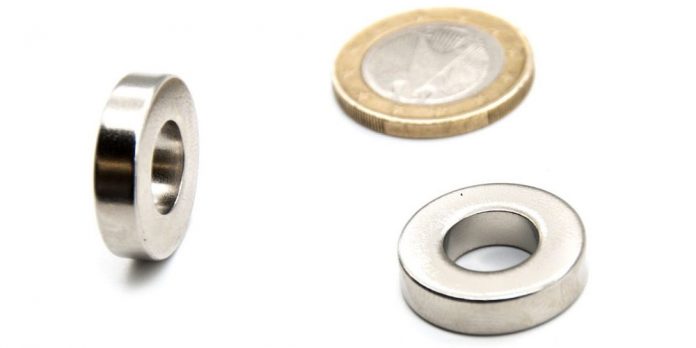Neodymium magnets are the most used magnets worldwide since their development. They are rare earth magnets made up of metal alloys of Iron, Boron, Neodymium, and other transition metals. Their performance is higher compared to other magnets due to their strong magnetic field. They exist in two categories, i.e., sintered like the sintered Neodymium magnet and bonded. We look at the development of Neodymium magnets below.
Ways of Making Neodymium Magnets
While in their natural form, Neodymium magnets are magnetized at very low temperatures. When mixed with other metal alloys, magnetization happens at room temperature. Two distinct processes are used to develop Neodymium magnets which are sintering and bonding.
1. Sintering
It involves several steps that include;
a. Melting
The required metals that are iron, boron, and Neodymium in the needed portions are taken and put in an induction furnace for melting. As they melt, an alloy is formed in which additional elements such as cobalt are added to help the final product resist corrosion. The created mixture varies between manufacturers due to the extra elements and grades used.
b. Powdering of the Alloy
After melting, the alloy is allowed to cool then it is molded into ingots. In a mixture of argon and nitrogen atmosphere, the ingots are jet-milled to form a powder. The powder is then placed in a hopper awaiting pressing.
c. Powder Pressing
The step involves the upsetting process where the powder is pressed to form a die that’s bigger than the required shape. The reason for the larger size is to give it room to shrink back to its desired shape. It is then put in a second die and exposed to a magnetic field for magnetization. The magnet is then demagnetized using a pulse to form a green magnet.
d. Sintering and Machining
The green magnet is compacted and heated to below melting point in an oxygen-free zone to give it vital magnetic characteristics. The temperature is kept around 1080 degrees centigrade, allowing the particle to stick together. Later, the magnet is cooled to reduce any phases present. The sintered magnets are then ground and shaped to match their tolerances using cutting tools.
e. Plating, Coating, and Magnetization
Neodymium is coated with elements like plastics, copper, nickel, and zinc to prevent corrosion. The magnet is exposed to a magnetic field using high voltage and capacitors, giving off a strong current.
2. Bonding
It is also known as compression bonding and involves a die pressing procedure that uses Neodymium powder and epoxy binding mixture. The mixture can either be cured in the oven or put in a press machine for compression, and the magnets are formed into different shapes and configurations. The magnets produced are isotropic and have tight tolerances, so they don’t need to undergo further processing. The epoxy binding component is famous for producing strong magnets that can go through lathing or milling.
Final Word
Neodymium magnets are widely used because of their magnetic properties and are produced through the sintering and bonding processes discussed above. You can have them produced in whichever size you want since they retain their magnetic strength, and you get a good quality magnet for your application.














